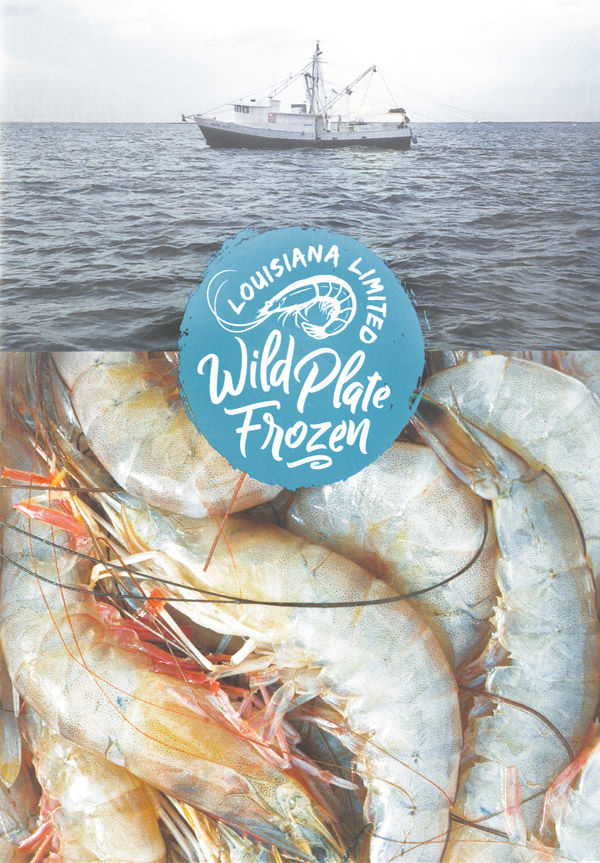Marketing LA Catch
Published 5:00 am Wednesday, July 18, 2018

- Sea Grant, the LSU AgCenter and other university and state agencies are working together to help Louisiana fisherman market their products locally and across the nation.
Serving seafood just got easier
Trending
Packaged seafood is not what it used to be as there are changes happening every day to take Louisiana products into the market in a brand new way.
“We’re working on a whole line of products with small mom and pop processors from across the state,” Tommy Hymel said at the recent EatLafayette kickoff and King/Queen of Seafood chefs competition. “They’re called added-value products like the one from right here in Loreauville, wild caught blue cat(fish) and channel cat(fish). They’ve got a whole fish processing plant called Freshwater Seafood. They are the largest catfish food processor in the state.”
Lawrence “Butch” and Edna Smith of Freshwater Seafood have seen the ups and downs of the commercial fishing industry and sales. Their retail businesses have been in New Iberia and Catahoula, but Loreauville is their current place of processing frozen and selling fresh seafood.
The majority of their product is caught by Butch Smith and his team with the balance meeting the market demand purchased from other fisherman, depending on the supply. Smith has been known to catch up to 3,000 pounds of fish himself.
The Sea Grant products that include collarbone catfish has the bone in, filets and also flounder among other delicacies like soft-shell crabs and jumbo shrimp — items promoted with the Louisiana marketing support as produced in the state — but, they are typically not found in a grocery store. Hymel calls it the “best of the best.”
The first question to answer is how can local consumers purchase the products?
Trending
“They can go online to the LouisianaSeafoodDirect.com website to find all of these products listed and those who produce them,” Hymel said. “A lot of these can be bought directly from the producer. For example, hand-peeled, hand-deveined shrimp.”
The Louisiana Seafood Direct Program also is helping the state’s seafood industry compete with the worldwide aquaculture industry. The word is spreading through efforts by Hymel acting as the LSU AgCenter and Louisiana Sea Grant agent. He said recently on the LSU AgCenter website, “The state seafood industry has gone through a number of challenges, including hurricanes Rita and Ike and the BP oil spill. But it remains the largest seafood-producing state in the Lower 48. Those who have survived the challenges are benefitting from the program, which connects fishers with consumers.”
On the LouisianaDirectSeafood.com website, consumers can learn about fresh seafood products available from boats and processors with links to Cameron Direct Seafood, Delcambre, LaTer and Southshore Direct Seafood. In Delcambre more than 70 participants are offering their products directly to consumers, Hymel said, more than 90 are listed on the site.
“Louisiana Direct has opened a lot of doors to a lot of new commerce. It’s been a huge opportunity created for commercial fishermen, packers and processors,” he said.
Hymel suggests the drive to locations with fresh seafood is worth the product. Take an ice chest and fill up the freezer for the best seafood, soft-shell crabs, everything you can possibly imagine. A filet from a flathead catfish, is the “Cadillac of seafood,” according to Hymel. All of these processors are preparing wild caught seafood.
Aquaculture oysters are also part of the mix, raised in floating cages. A better tasting oyster doesn’t require sauce to be good.
“They have this deep rich oyster flavor. They raise them at the surface so there is a lot more food for them to filter feed at that level,” Hymel said.
New Packaging Methods
Processing is not just happening at the docks. Within an hour of being caught, Lance Nacio can plate frozen shrimp on his boat. Working with the Louisiana Sea Grant program, Nacio has created a brand, Anna Marie Shrimp, out of the LaTer Port, in Dulac south of Houma.
“Frozen shrimp has been sold in all types of forms, but we wanted to call it something because it is a spectacular, premium gourmet product. This is the best of the best of our Louisiana products. It’s better than fresh because they catch it, and immediately freeze it and it stays that way until they reach the port,” Hymel said.
The shrimp are frozen packaged in a box that you can buy direct, and they’re shipped all over the United States.
“The way we freeze them is not how they are traditionally frozen in the Gulf, which is in brine, an efficient way of freezing but it is detrimental to the product — it causes the peel to stick,” said Lance Nacio. “Our product, we just chill them in refrigerated sea water as quick as we possibly can and then put them in this box, weighed and packaged and plate frozen at 45 degrees below zero. This product you can put into a pot of water frozen and it will boil and peel perfectly.”
Hymel said this is where the Louisiana seafood industry is going.
“We’re looking for ways to segregate our industry from commodity products with these higher end gourmet products. That’s what you’re seeing and that’s what we’re showing,” Hymel said. “How do you get to enjoy that at home? All of these are package products you can buy. These are things we’re working with industry to get more value for what we catch with this higher quality product.”
Training & Information
The Louisiana Direct and Sea Grant have created a whole unit to travel around the state to promote seafood and more, including the plate frozen unit that Nacio uses onboard his boats that allows immediate subzero freezing of his fresh catch. Included in the unit is a chilled seawater system that allows fisherman to keep the catch fresh for up to a week without putting them on ice. Shrimpers are able to go to ice-free cooling systems.
“With this program we train the fisherman, it’s a statewide program that (Louisiana State University), LSU AgCenter, Louisiana Sea Grant and Louisiana Department of Wildlife and Fishers work on together,” Hymel said. “That’s who I work for. We have this whole program with videos, we do training, we have fact sheets and train them how to do direct marketing. We work on that and value-added seafood which is what you see.”
Hymel said this wasn’t being done previously, not to the point it is today. Hurricane Katrina opened the door for the state to do things differently. Grant money from the federal government, state and other resources have made it possible.
“University budgets are limited, but we’ve been very successful in being able to bring home resources to do this sort of work,” Hymel said. “We’re the largest seafood producing state in the Lower 48. We are the program along with Wildlife and Fisheries. We’re the education end and work with business development. We’re working to help them get their product into the marketplace. It’s great for Louisiana and it’s great for the public.”
Today’s featured recipes are from the display provided by the Sea Grant program and the Delcambre Market.

